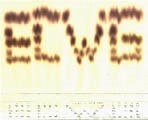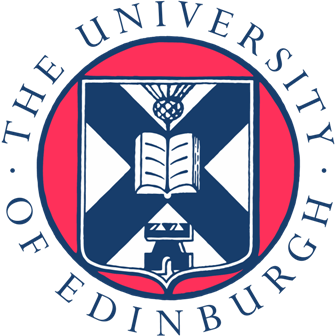- unusual oligosaccharides of a range of sizes (cell wall- and starch-related)
- phenolic compounds
- vitamin C metabolites
- plant cell wall polysaccharides such as xyloglucan, xylan, pectin and their ferulic acid conjugates.
- sugar nucleotides and phosphates
- Carbon- and tritium-tagged substrates such as
- Sulphorhodamine-labelled (fluorescent) substrates such as
- Toluidine blue-labelled (naked eye-visible) substrates such as
- Fluorescent dot-blot kits for assaying XET, MXE and CXE
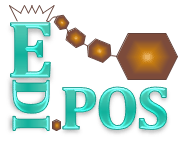
EDIPOS - Edinburgh Polysaccharide and Oligosaccharide Substrates: Biochemical reagents for studying plant cell wall enzymes

|
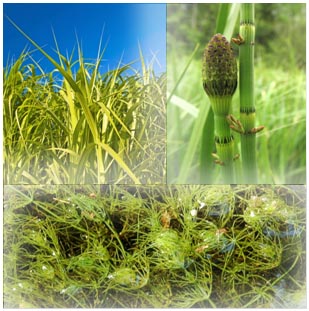 Cell walls determine the quality of most plant-based products - from nutritional value to the properties of fibres for textiles,
paper and bio-composites - as well as governing the growth of plant cells. Utilisation of plant biomass typically requires wall degradation. Understanding the key enzymes and
architectural polymers that affect the structure and function of plant cell walls is an active area of research in Universities and for companies looking to identify new and
improved plant-based products. EDIPOS's unique toolbox offers researchers a range of readymade biochemical reagents to probe plant cell-wall function and to assay microbial enzymes
that digest plant polysaccharides.
Cell walls determine the quality of most plant-based products - from nutritional value to the properties of fibres for textiles,
paper and bio-composites - as well as governing the growth of plant cells. Utilisation of plant biomass typically requires wall degradation. Understanding the key enzymes and
architectural polymers that affect the structure and function of plant cell walls is an active area of research in Universities and for companies looking to identify new and
improved plant-based products. EDIPOS's unique toolbox offers researchers a range of readymade biochemical reagents to probe plant cell-wall function and to assay microbial enzymes
that digest plant polysaccharides.
The Edinburgh Cell Wall Group, led by Professor Stephen Fry, studies plant cell walls. These are a metabolically active and structurally
significant compartment of the plant cell. Knowledge of this area is valuable for our fundamental understanding of plant physiology and evolution, but also crucial
to developing and improving the properties of plant-based products including the utilisation of biomass for biofuels.
The ECWG has developed unique range of tools and reagents for studying plant cell walls. Many of these are radiolabelled or
fluorescently labelled and can be used for development of assays and high-throughput screens for identifying and measuring plant, fungal and bacterial enzymes that target the plant cell wall.
These include
Our reagents are supplied with full data sheets detailing specific radioactivity,
radiochemical purity, chemical structure and position of radiolabelling.
Currently there are two main categories: radiolabelled polysaccharide and oligosaccharide substrates
and Dot-blot test membranes. For a full list of available reagents click here to review the on-line catalogue:
 Individual items can be ordered by emailing s.fry@ed.ac.uk. Labelling of specific enzyme substrates
(not listed in the catalogue) can be performed on request after consultation.
Individual items can be ordered by emailing s.fry@ed.ac.uk. Labelling of specific enzyme substrates
(not listed in the catalogue) can be performed on request after consultation.
⇒ Polysaccharide and oligosaccharide substrates currently available include
β-mannan-based oligo's
β-xylan-based oligo's
β-galactan-based oligo's
α-arabinan-based oligo's
(1,3-β-glucan) lichenan-based oligo's
(1,3-1,4-β-glucan) MLG-based oligo's
cellulose-based oligo's
polygalacturonide-based oligo's
homogalacturonan-(pectin)-based oligo's
rhamnogalacturonan-II-based oligo's
chitosan-based oligo's
chitin-based oligo's
xyloglucan-based oligo's
cell wall-related polysaccharides
miscellaneous sugars and organic acids
phenolics
sugar-nucleotides and phosphates
cutin precursors
compounds in metabolism of vitamin C, etc.
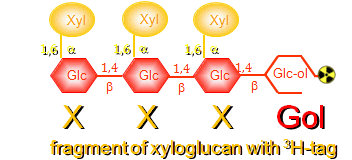
xyloglucan-based oligo's
β-mannan-based oligo's
β-xylan-based oligo's
(1,3-1,4-β-glucan) MLG-based oligo's
cellulose-based oligo's
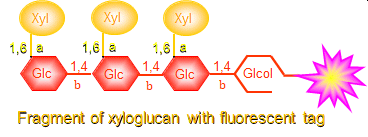

 In-situ detection of hetero-trans-β-glucanase (HTG) in Equisetum fluviatileae stem using XXXG-SR as acceptor susbtrate - photo: L Franková 2021
In-situ detection of hetero-trans-β-glucanase (HTG) in Equisetum fluviatileae stem using XXXG-SR as acceptor susbtrate - photo: L Franková 2021
 Trans-β-mannanase action in the basal node (BN) and multicellular meristematic apex (MA) of axillary whorl of branchlets (WB) of Chara vulgaris (with Man6-SR as acceptor susbtrate; Franková & Fry 2021 Plant J., 108: 5-6).
Trans-β-mannanase action in the basal node (BN) and multicellular meristematic apex (MA) of axillary whorl of branchlets (WB) of Chara vulgaris (with Man6-SR as acceptor susbtrate; Franková & Fry 2021 Plant J., 108: 5-6).
xyloglucan-based oligo's:
XXXG-TB, XXLG-TB, XLLG-TB, XGO's DP14, XGO's DP>14
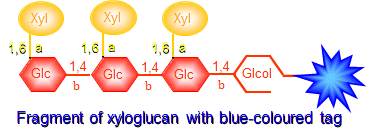

 Mixture of toluidine blue-labelled oligoxyloglucan.
Individual oligosaccharides are suitable for assaying β-galactosidase and α-xylosidase activities by TLC
Mixture of toluidine blue-labelled oligoxyloglucan.
Individual oligosaccharides are suitable for assaying β-galactosidase and α-xylosidase activities by TLC XET (xyloglucan endotransglucosylase) dot-blot kit
MXE (MLG:xyloglucan endotransglucosylase) dot-blot kit
CXE (cellulose:xyloglucan endotransglucosylase) dot-blot kit
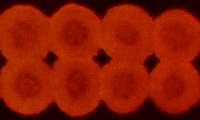
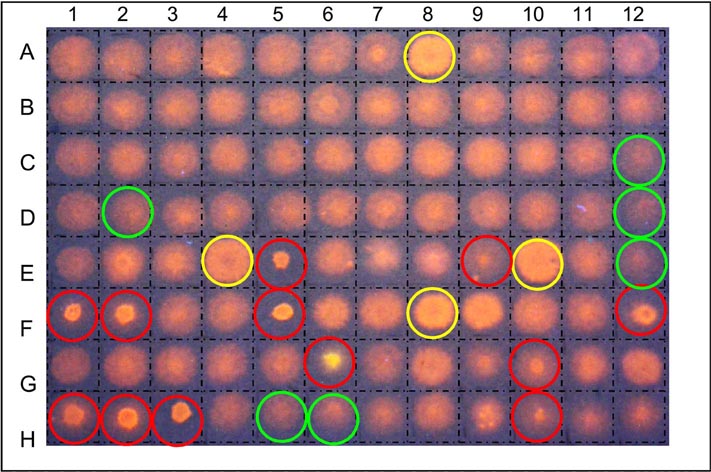
Fluorescent dot-blot showing cellulose:xyloglucan endotransglucosylase (CXE)
activity on a test paper impregnated with XXXG-SR (Franková 2020)
High-throughput screens for XET inhibitors on test strata impregnated with xyloglucan (donor) followed by fluorescently-tagged XXXG (acceptor) (Franková & Fry, unpublished)
